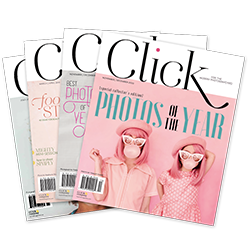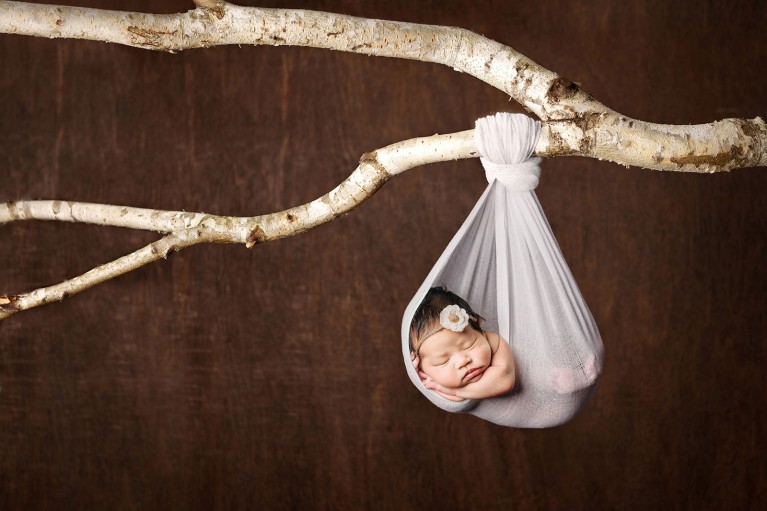Newborn photography has experienced a surge of creative developments over the last few years. Styles range from simple and beautiful lifestyle photos to elaborate and colorful stunners. In every newborn session, safety must always be the most important consideration.
With a combination of posing, styling and photoshop magic, unique and creative newborn images, especially with those where the baby appears to be posed on a tall or high prop, can be safely achieved with the use of digital backdrops and newborn composite images.
Here’s how I safely and easily create newborn composite photos:
1. Plan out your final image.
Start with a pen and paper and sketch your ideas. Apply common photography composition tools such as the rule of thirds and framing, as well as color theory. Make sure to gather all props, equipment, and lighting required.
2. Photograph the baby and prop separately.
First, photograph and post-process the prop to serve as a digital backdrop. I shoot props at f/2.8, the same aperture I use with the newborn. Make sure to focus on the spot where you expect the baby’s face to be.
Next, photograph the baby wrapped up or lying on a blanket under the same lighting as the prop. As always, use spotters— never leave baby unattended. Watch for baby’s hands or feet turning purple and immediately alleviate pressure if needed. Watch for newborn reflexes such as rooting and startling. Remember, safety is always the top priority.
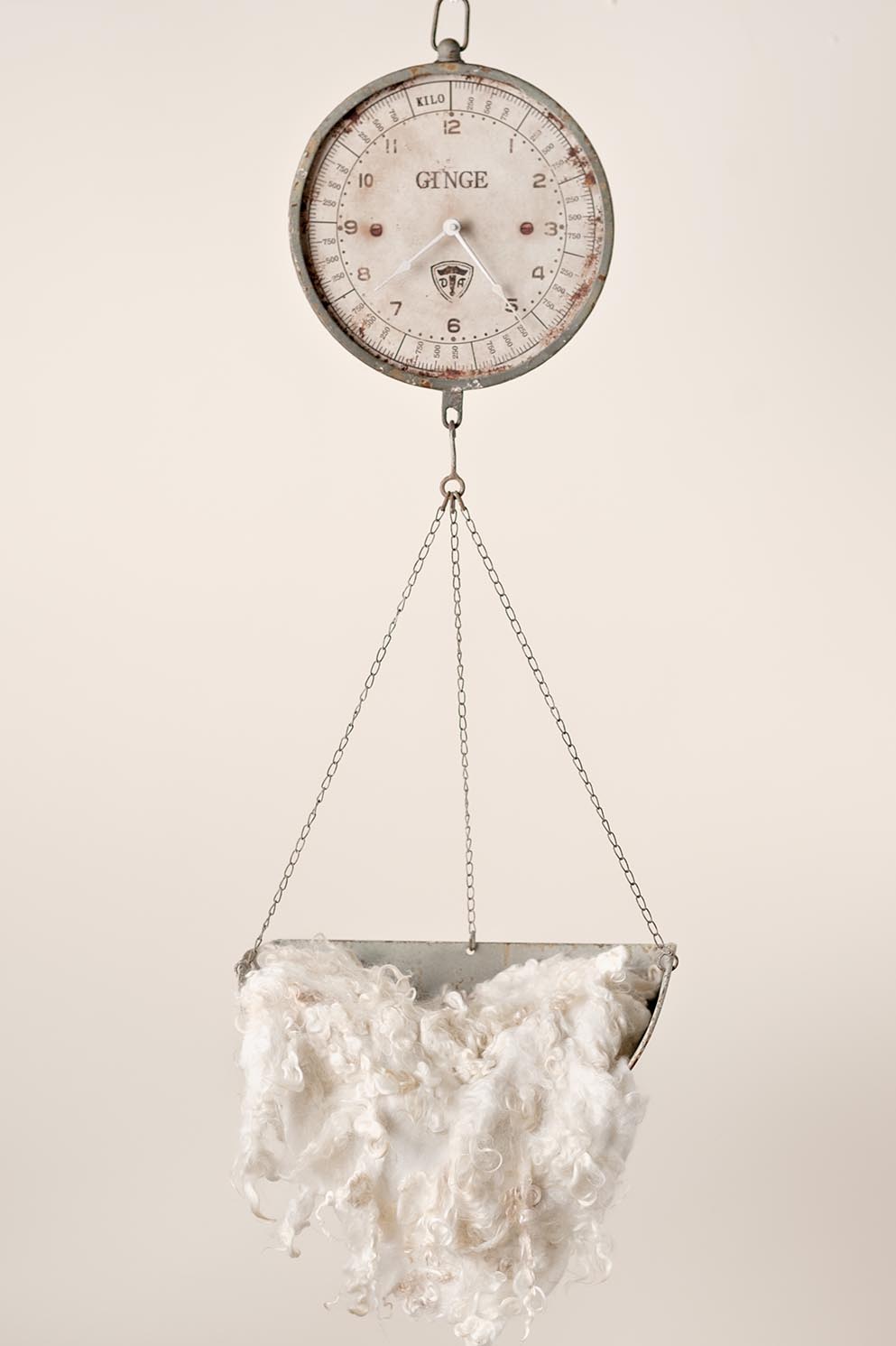
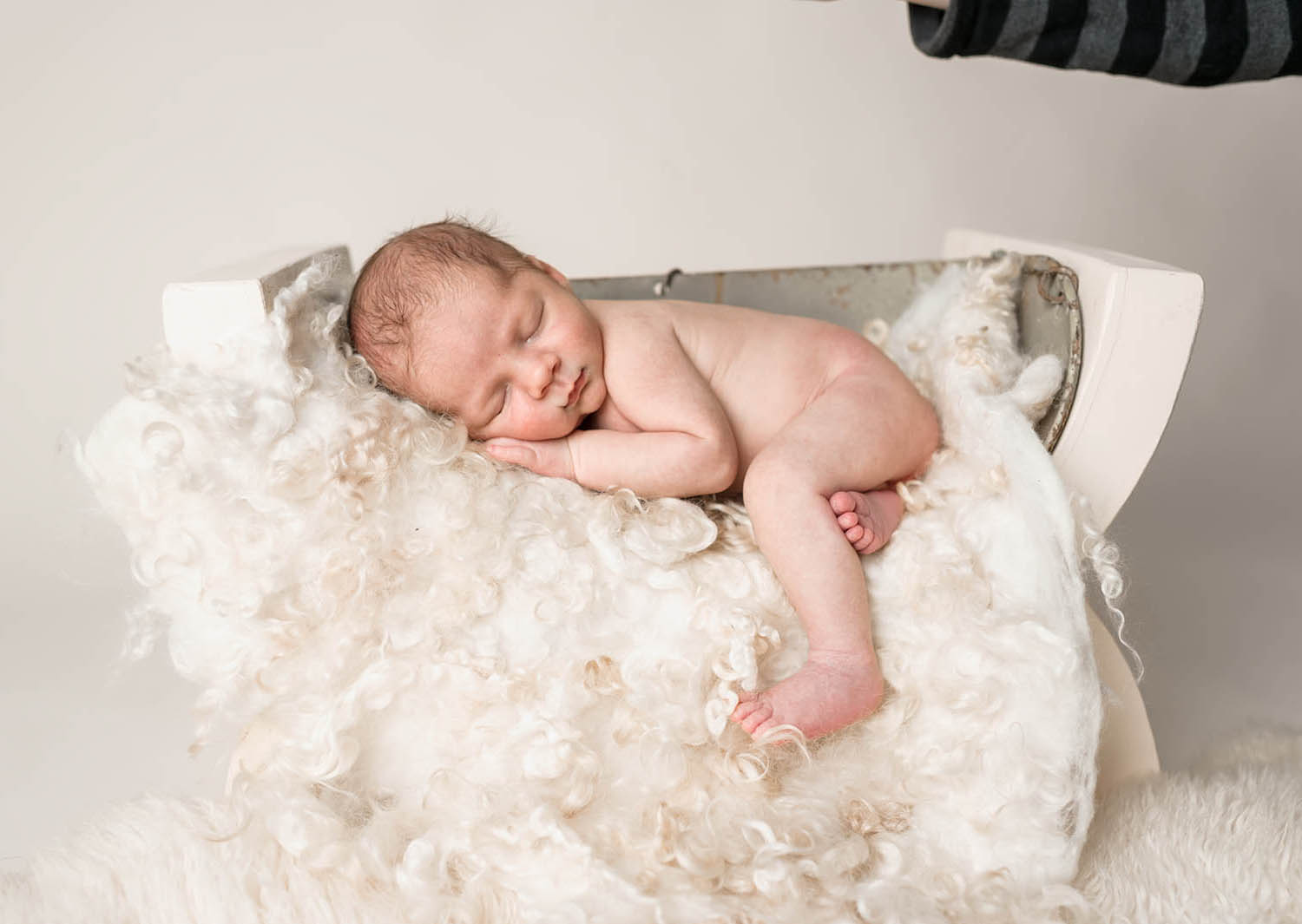
3. Merge the images in Photoshop.
Step 1: Drag the newborn image on top of the backdrop image. The newborn image will show up on its own layer.
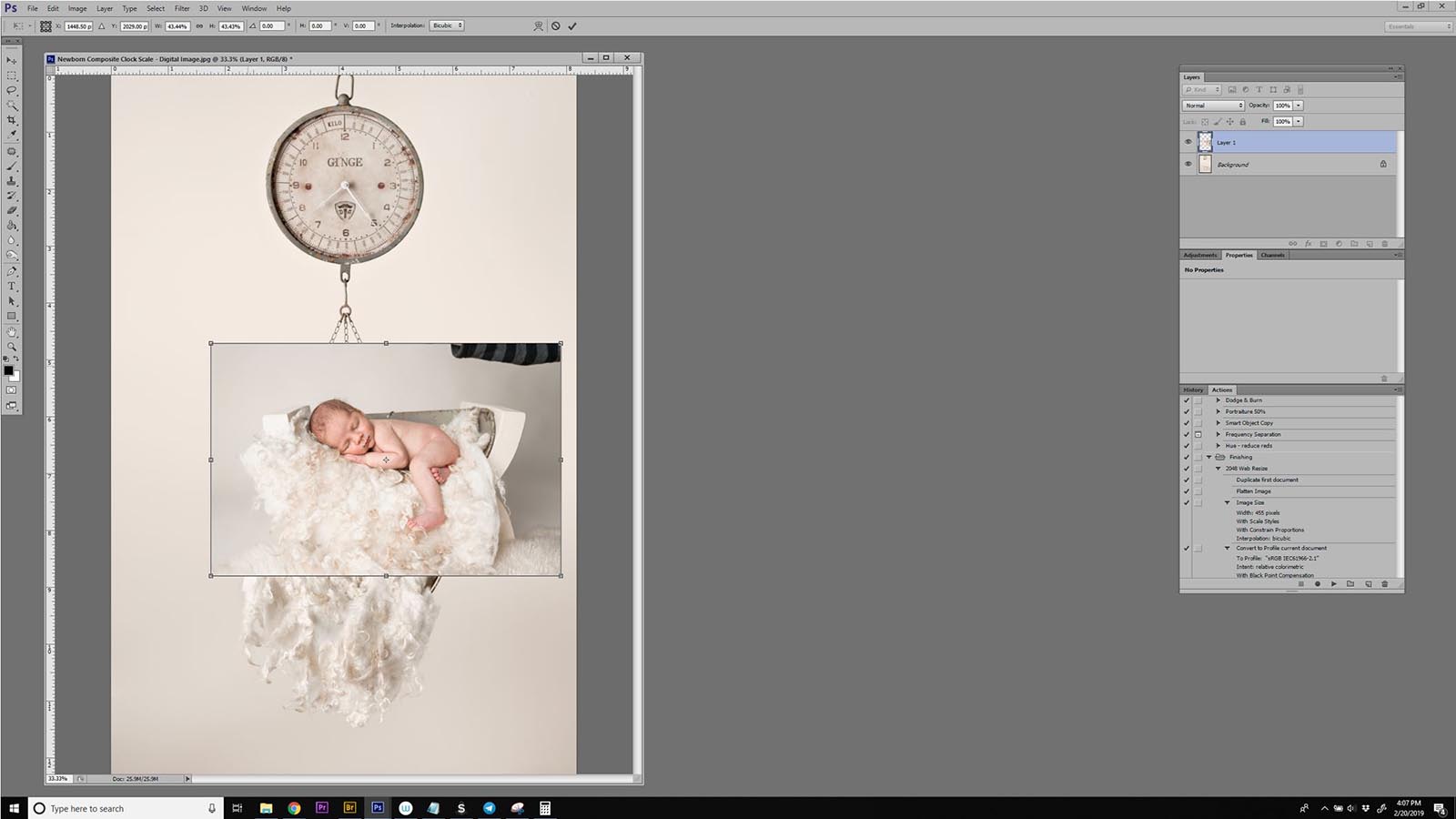
Step 2: Reduce opacity to 50 percent on the newborn image so you can see through it.
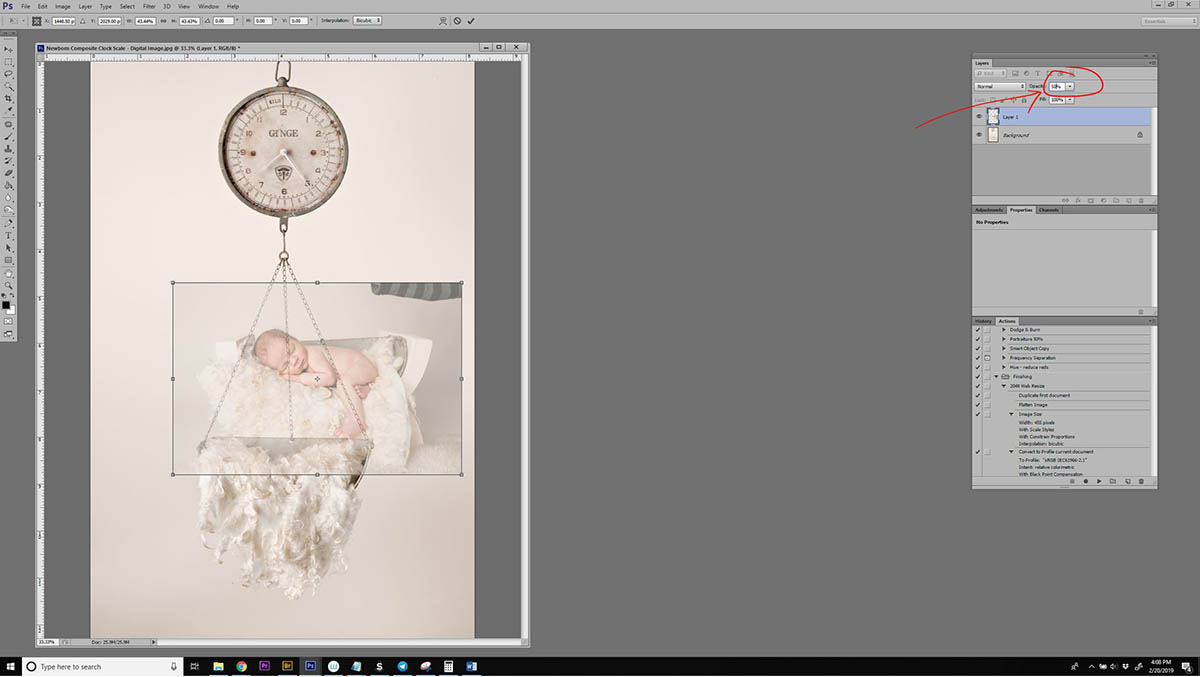
Step 3: Add a white mask to the newborn image layer. This will allow you to move and scale the image.
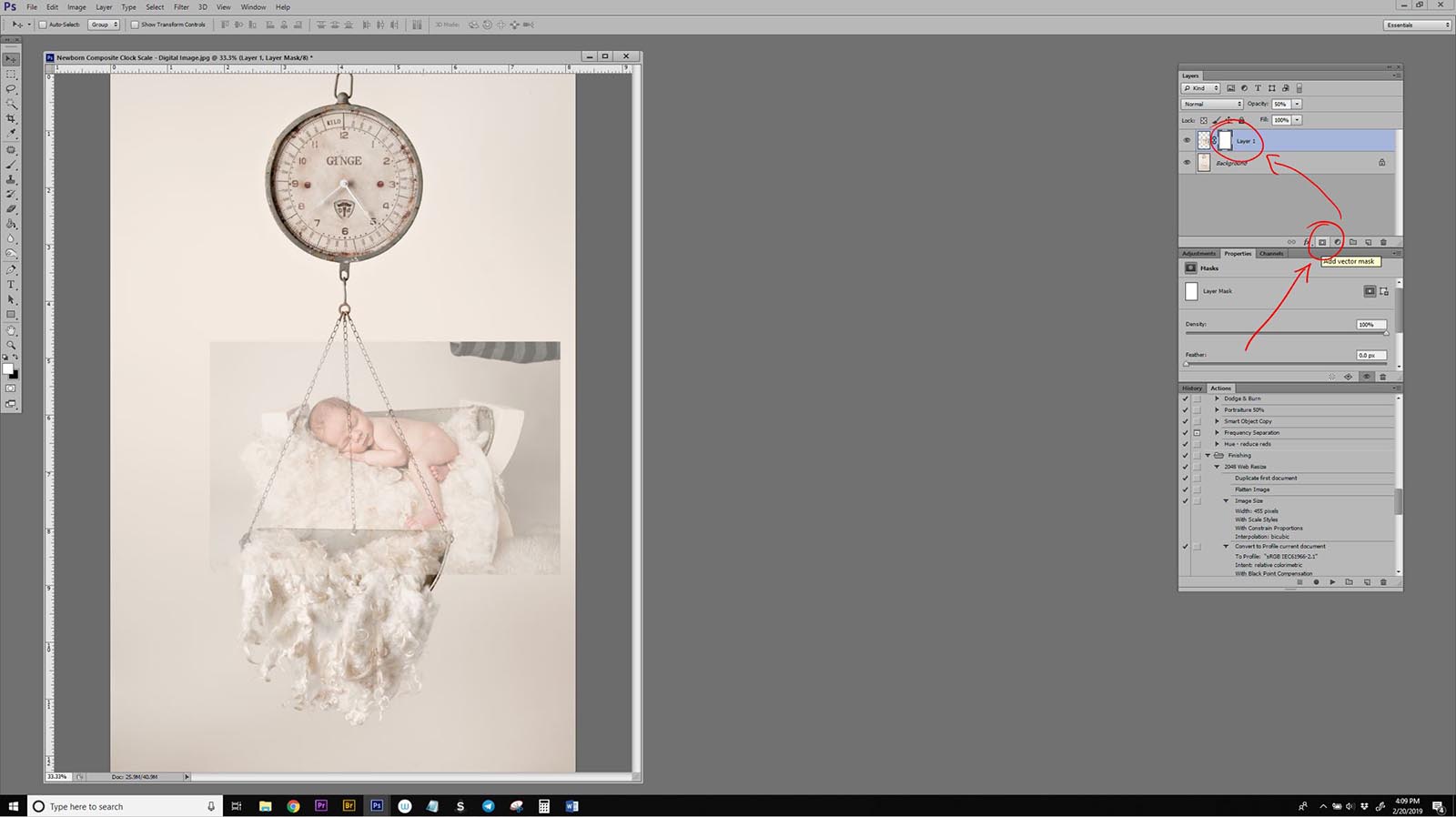
Step 4: Scale the newborn image to size and line it up with the digital backdrop.
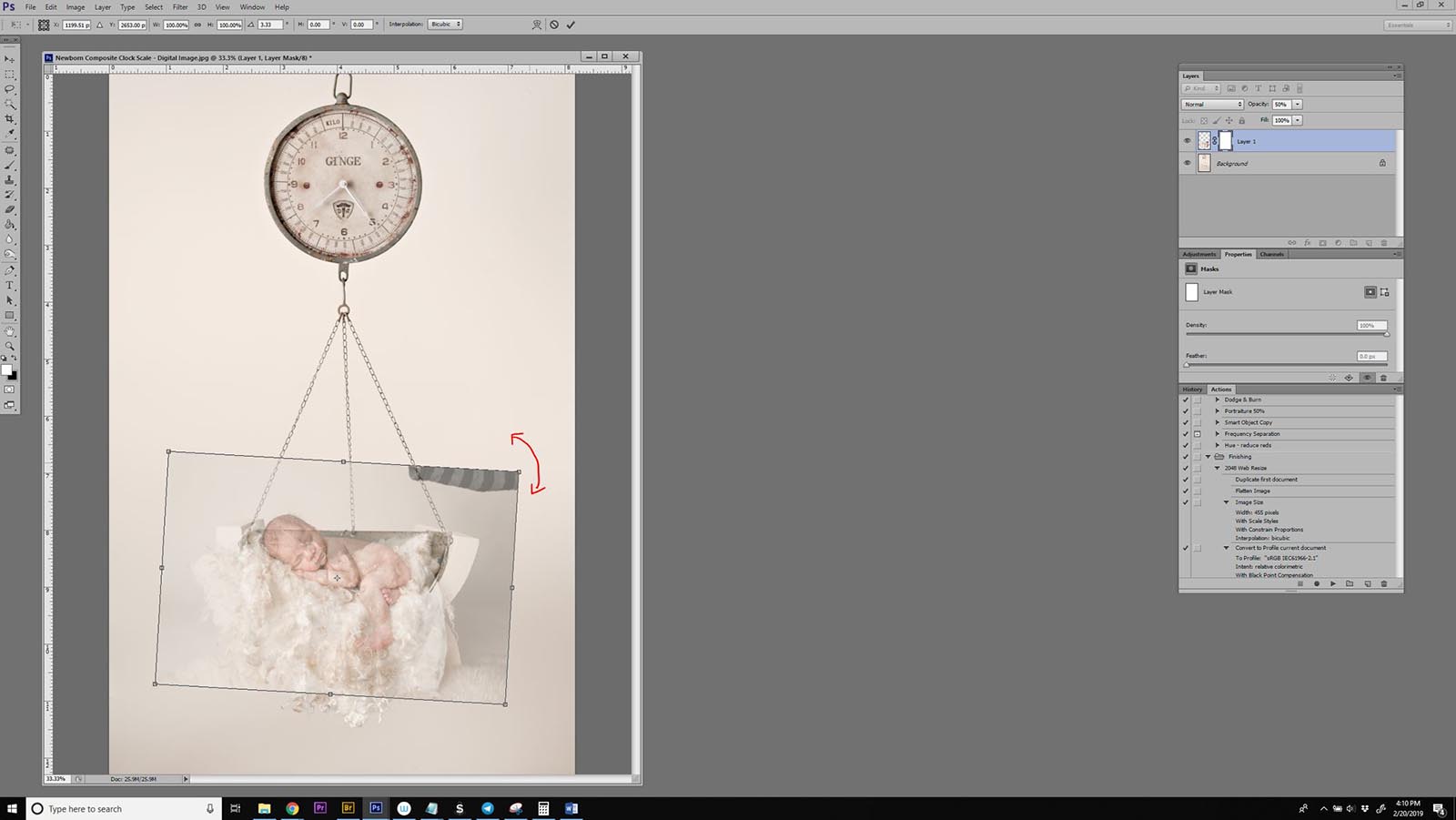
Step 5: Using a soft black brush, mask off the portions of the newborn image that you don’t want to show up.
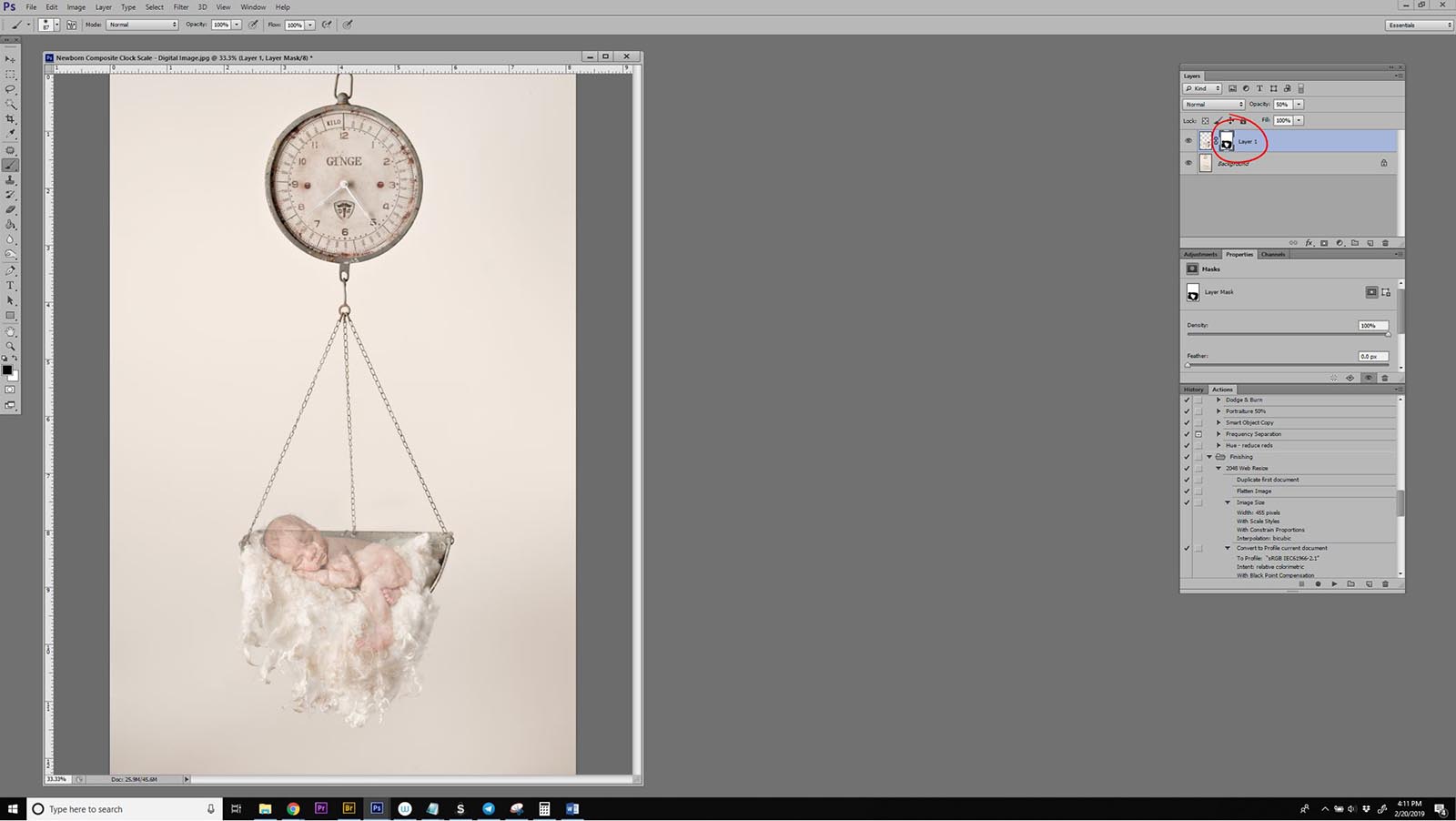
Step 6: Restore the opacity to 100 percent and double check your mask to make sure it’s perfect.

Voilà! You are done with compositing. From here you can do your usual newborn retouching.
Final image:
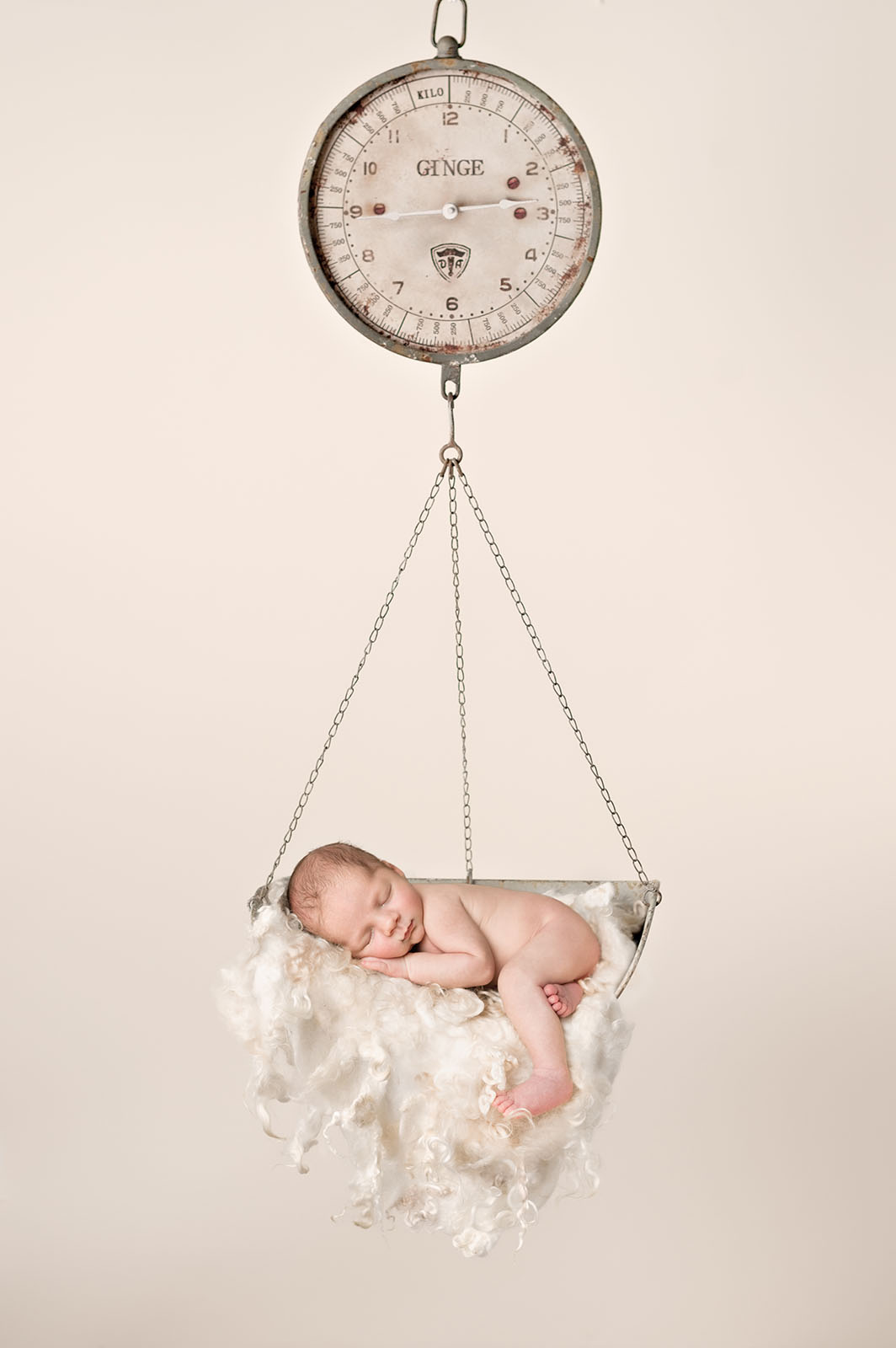
Here’s another before and after, done using the safe newborn composite technique outlined above:
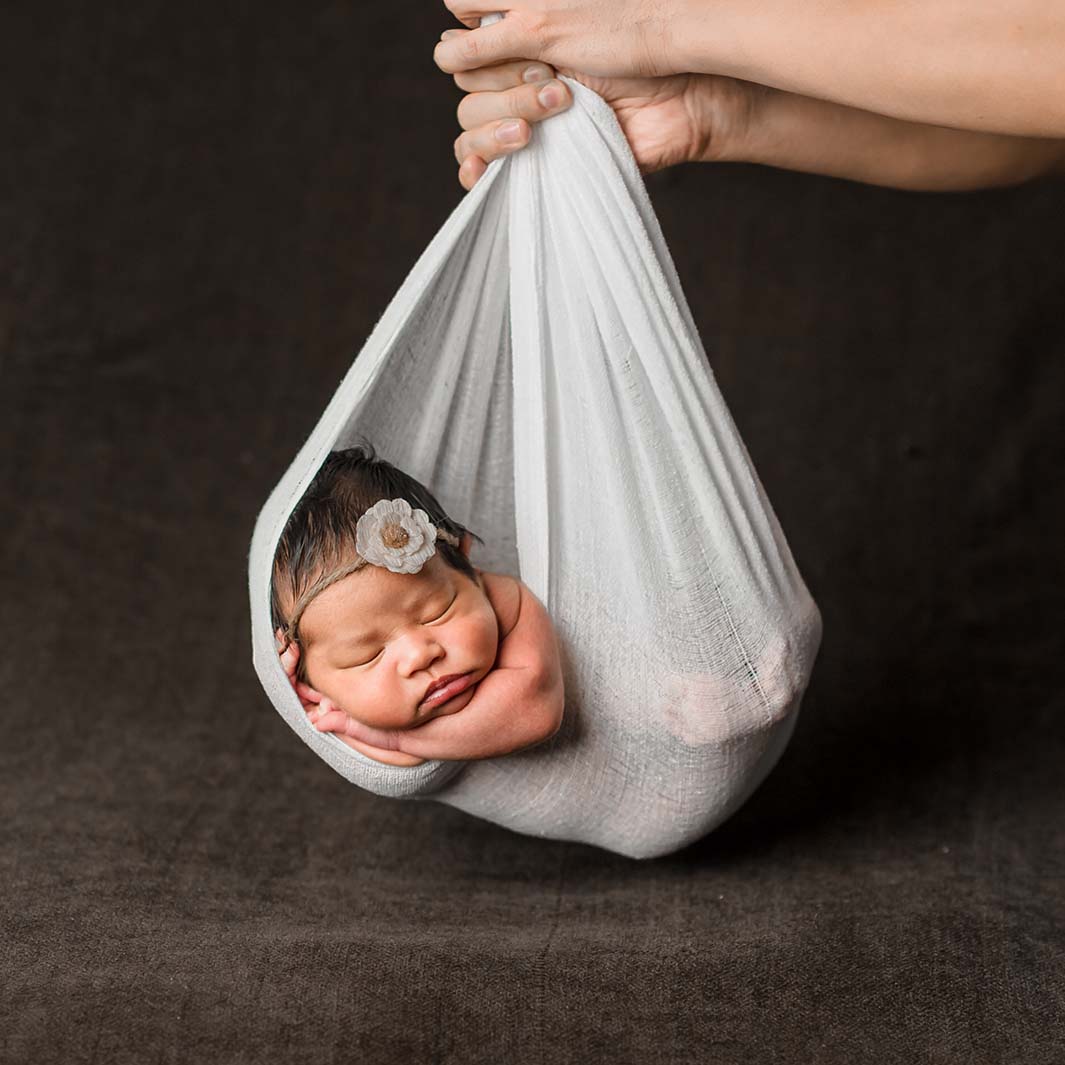
Tip: When baby is wrapped like this, make sure to watch for baby’s hands or feet turning purple so you can stop and alleviate pressure if needed.
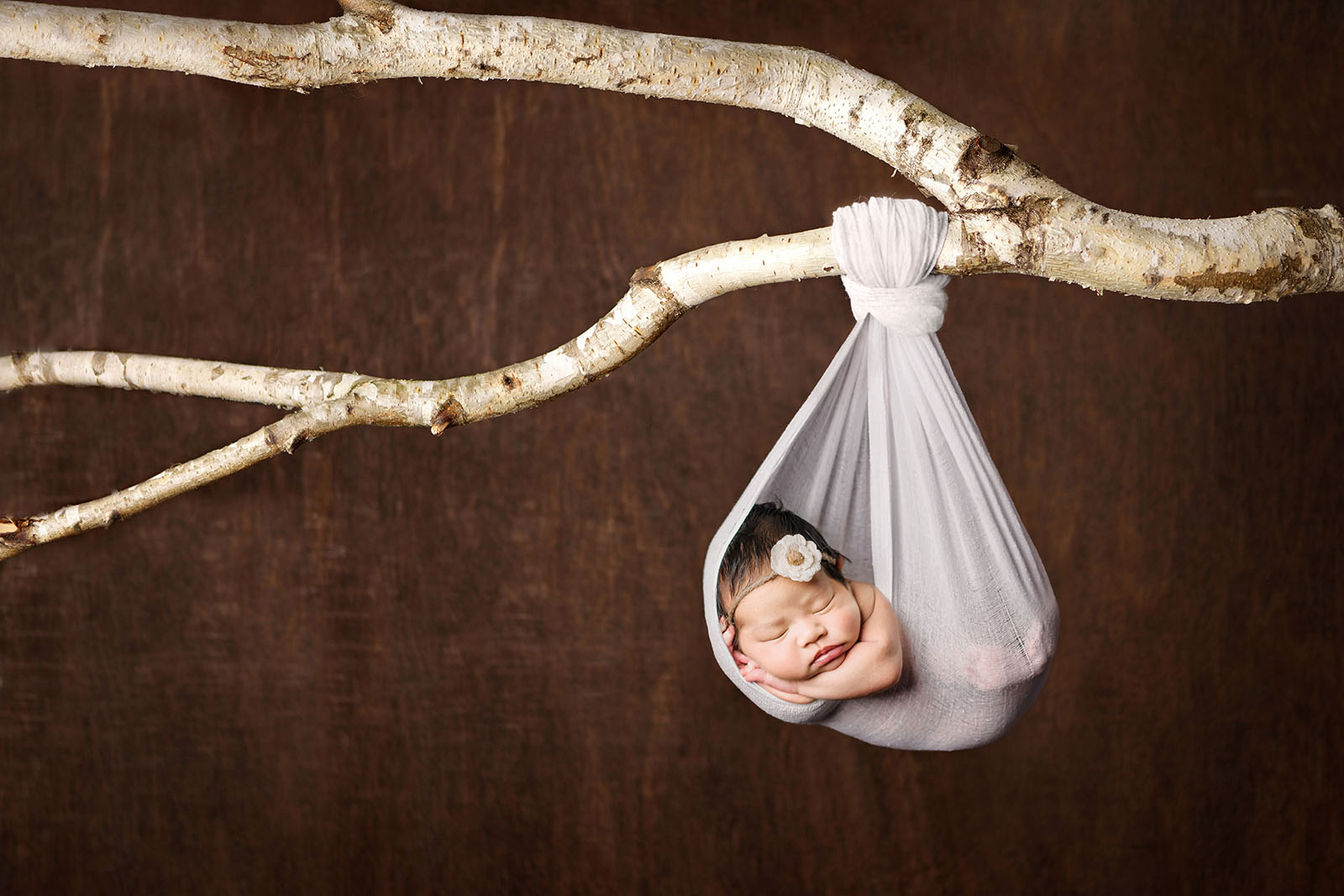
All photos by Eden Bao
This article originally appeared in the May/June 2019 issue of Click Magazine. To subscribe, click here.

